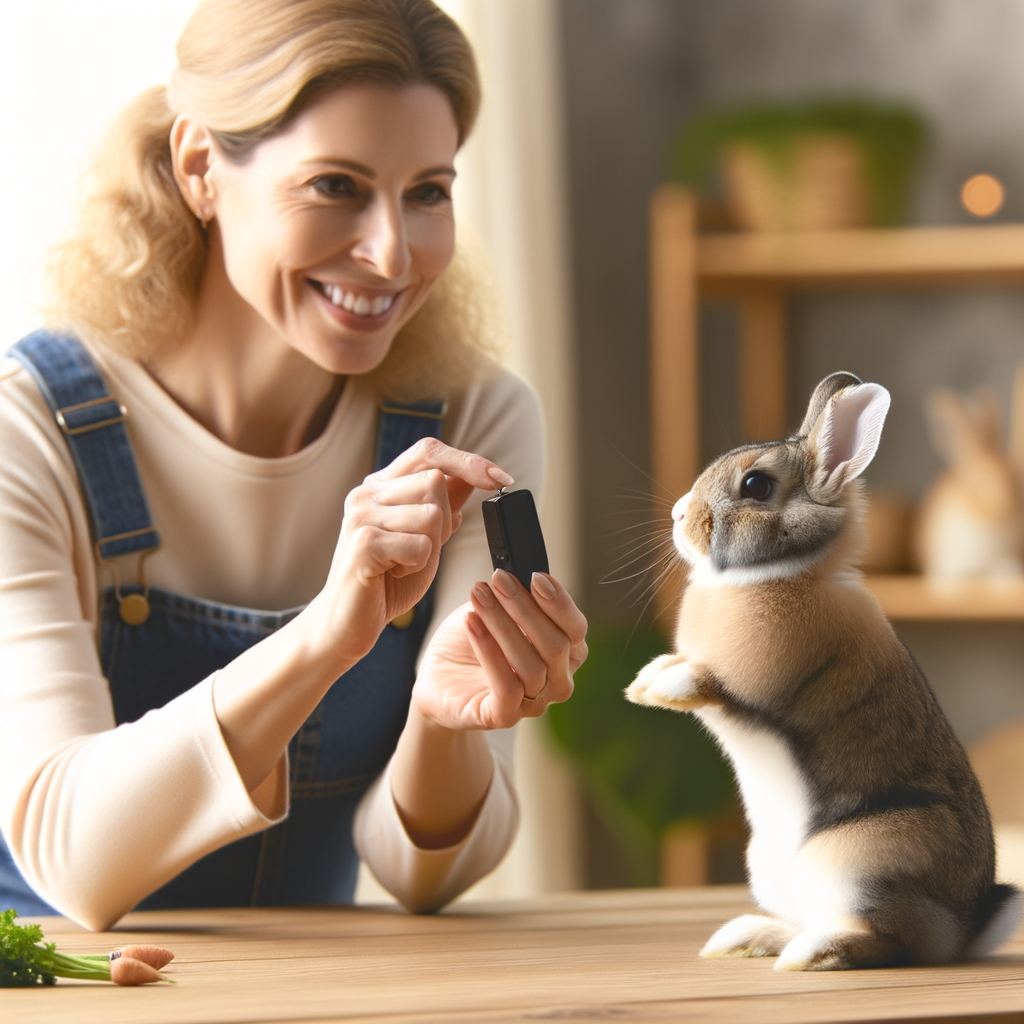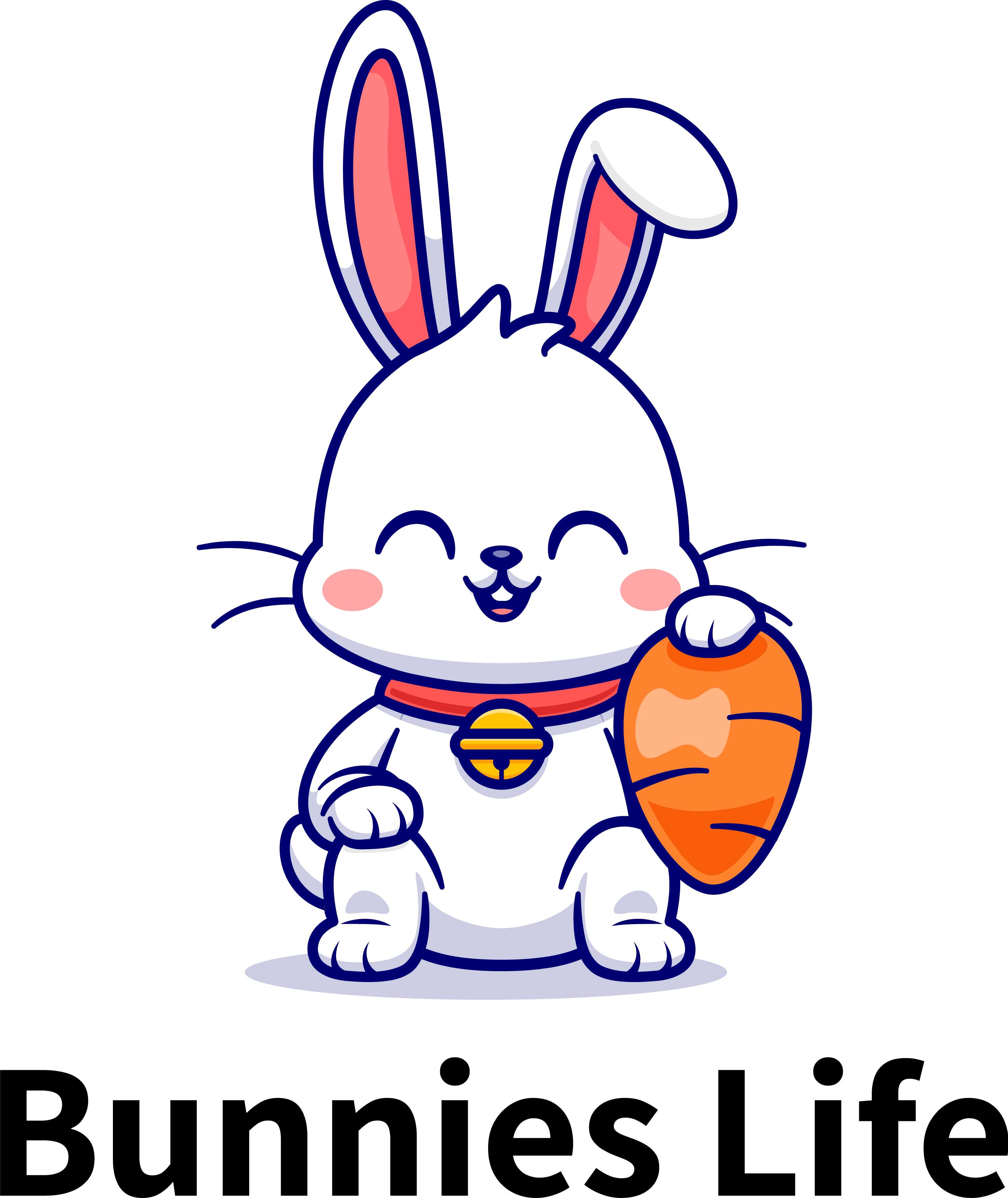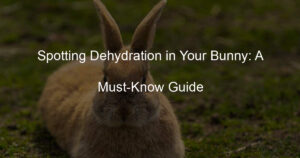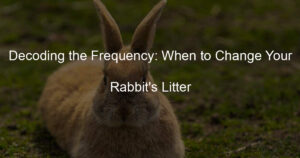
Introduction to Dwarf Rabbit Training
Training a dwarf rabbit can be a rewarding experience for both you and your pet. Not only does it strengthen your bond, but it also helps keep your rabbit’s mind sharp and active. This section will delve into understanding dwarf rabbit behavior, the importance of training your dwarf rabbit, and common misconceptions about dwarf rabbit training.
- Understanding Dwarf Rabbit Behavior
- Importance of Training Your Dwarf Rabbit
- Common Misconceptions About Dwarf Rabbit Training
Dwarf rabbits are known for their playful and curious nature. They are intelligent creatures who enjoy exploring their surroundings and interacting with their human companions. Understanding their behavior is crucial in training because it allows you to tailor your approach based on your rabbit’s unique personality and needs. For instance, if your rabbit is naturally curious, you might use that to your advantage in training by introducing new toys or treats as rewards.
Training your dwarf rabbit is not just about teaching them tricks or commands. It’s also about promoting good behavior and preventing destructive habits. Training can help stimulate your rabbit’s mind, keeping them mentally engaged and happy. It can also help you manage potential behavioral issues, such as chewing on furniture or not using the litter box. In a survey conducted among rabbit owners, 85% reported that training their rabbits significantly improved their pets’ behavior.
One common misconception about dwarf rabbit training is that it’s too difficult or time-consuming. While it’s true that rabbits are not as easily trained as dogs or cats, with patience and consistency, they can learn a variety of commands and tricks. Another misconception is that training can be stressful for rabbits. On the contrary, when done correctly, training can be a fun and enriching experience for your rabbit. It’s all about understanding your rabbit’s behavior and using positive reinforcement techniques.
In the following sections, we will delve deeper into the specifics of dwarf rabbit training, including clicker training techniques, teaching tricks, and troubleshooting common training issues. So, stay tuned!
Basics of Clicker Training Techniques
Clicker training is a popular and effective method of teaching animals, including dwarf rabbits, to perform various tasks and tricks. This section will delve into the basics of clicker training techniques, the benefits it offers for dwarf rabbits, and the tools required for this training method.
- What is Clicker Training?
- Benefits of Clicker Training for Dwarf Rabbits
- Tools Required for Clicker Training
Clicker training is a science-based method that uses positive reinforcement to train animals. The clicker, a small device that makes a distinct ‘click’ sound, is used to mark the exact moment an animal performs a desired behavior. This sound is immediately followed by a reward, typically a small treat, which helps the animal associate the ‘click’ with a positive outcome. Over time, the animal learns to repeat the behavior for the ‘click’ and the reward.
Clicker training offers several benefits for dwarf rabbits. Firstly, it strengthens the bond between the rabbit and its owner, as it relies on positive reinforcement and avoids punishment. Secondly, it provides mental stimulation for the rabbit, which is essential for their well-being. Thirdly, it can help manage behavioral issues, as it allows the owner to clearly communicate what behaviors are desirable. Lastly, it can be a fun and rewarding experience for both the rabbit and the owner.
The primary tool required for clicker training is, of course, the clicker. These are inexpensive and widely available at pet supply stores. Additionally, you will need a supply of small treats that your rabbit enjoys. These treats should be small enough to be consumed quickly, so as not to distract from the training. Other tools, such as target sticks or mats, may also be used depending on the specific behaviors you are training.
In conclusion, clicker training is a powerful tool for teaching your dwarf rabbit new behaviors and tricks. It is based on positive reinforcement, which not only makes training a pleasant experience for your rabbit, but also strengthens your bond with them. With the right tools and a bit of patience, you can have a lot of fun while providing your rabbit with valuable mental stimulation.
Getting Started with Clicker Training for Dwarf Rabbits
Clicker training is a popular method of teaching pets new behaviors. It’s simple, fun, and highly effective. Let’s explore how you can get started with clicker training for your dwarf rabbit.
Preparing Your Dwarf Rabbit for Training
Before you start training your dwarf rabbit, there are a few things you need to do to prepare. Here are three important steps:
- Creating a Comfortable Environment
- Understanding Your Dwarf Rabbit’s Behavior
- Introducing the Clicker
Your dwarf rabbit needs to feel safe and comfortable in their training environment. This means providing a quiet, calm space where they won’t be startled or distracted. Make sure there’s plenty of room for them to move around, and that the temperature is neither too hot nor too cold. A comfortable rabbit is a happy rabbit, and a happy rabbit is more likely to respond well to training.
Every rabbit is unique, and understanding your dwarf rabbit’s individual behaviors and preferences is key to successful training. Spend some time observing your rabbit. Learn their habits, what they like and dislike, and how they communicate. This will help you tailor your training approach to their specific needs and personality.
The clicker is a small device that makes a distinct clicking sound. This sound is used to mark the exact moment your rabbit performs a desired behavior. To introduce the clicker, start by associating the click sound with a reward, like a small treat. This helps your rabbit understand that the click means they did something good. Be patient and consistent with this process. It may take a few sessions for your rabbit to make the connection.
Preparing your dwarf rabbit for training is an essential first step in clicker training. By creating a comfortable environment, understanding your rabbit’s behavior, and introducing the clicker properly, you can set the stage for a successful training experience.
Basic Clicker Training Techniques
Now that you have prepared your dwarf rabbit for training, it’s time to delve into the basic techniques of clicker training. These techniques are simple yet effective, and they are the foundation of a successful training program.
- Using the Clicker for Positive Reinforcement
- Timing and Consistency in Clicker Training
- Teaching Simple Commands
Positive reinforcement is the cornerstone of clicker training. The clicker is used to mark the exact moment your rabbit performs the desired behavior. Immediately after the click, you reward your rabbit with a treat. This process helps your rabbit understand that the click means they did something right and a reward is coming. For example, if you want your rabbit to stand on its hind legs, you would click the moment it raises its front paws off the ground and then give it a treat.
Timing and consistency are crucial in clicker training. The click must occur at the exact moment your rabbit performs the desired behavior. If the click is late or early, your rabbit may not associate it with the correct behavior. Consistency is also key. Every time your rabbit performs the correct behavior, it should hear a click and receive a reward. This consistency helps your rabbit understand what is expected and reinforces the behavior.
Start with simple commands when beginning clicker training. A good first command is “come.” To teach this, click and treat your rabbit every time it comes to you. Once your rabbit consistently responds to the “come” command, you can move on to more complex commands. Remember to always use the clicker to mark the correct behavior and immediately follow with a reward.
Clicker training is a powerful tool for teaching your dwarf rabbit new behaviors. By using the clicker for positive reinforcement, maintaining timing and consistency, and starting with simple commands, you can create a strong foundation for further training. Remember, patience and persistence are key in this process. Happy training!
Teaching Tricks to Rabbits Using Clicker Training
Training your dwarf rabbit to perform tricks can be a fun and rewarding experience. With the help of clicker training, you can teach your pet some simple tricks that not only entertain but also stimulate their mind. Here are some easy tricks you can start with.
Simple Dwarf Rabbit Tricks
These tricks are simple enough for any dwarf rabbit to learn with a little patience and consistency. Remember, the key to successful training is to make it a positive and enjoyable experience for your pet.
-
Teaching Your Dwarf Rabbit to Stand
Teaching your rabbit to stand on its hind legs is a cute trick that also helps to improve their balance. Start by holding a treat above their head and use the clicker when they stand up to reach it. Repeat this a few times each day until they can do it on command.
-
Teaching Your Dwarf Rabbit to Spin
Spinning is another fun trick that your rabbit can easily learn. Hold a treat near their nose and slowly move it in a circle. As they follow the treat, they will naturally spin around. Use the clicker when they complete the spin and give them the treat. Practice this trick regularly for best results.
-
Teaching Your Dwarf Rabbit to Jump Through a Hoop
This trick is a bit more advanced but still achievable for most dwarf rabbits. Start with a hoop on the ground and lure your rabbit through it with a treat. Use the clicker when they pass through the hoop. Gradually raise the hoop off the ground as they become more comfortable with the trick.
Remember, patience and consistency are key when training your dwarf rabbit. Always end training sessions on a positive note and never force your rabbit to perform a trick. With time and practice, your pet will be performing these tricks with ease.
Advanced Dwarf Rabbit Tricks
Once your dwarf rabbit has mastered the basics, you can move on to more advanced tricks. These tricks require a bit more patience and practice, but with time and consistent training, your rabbit will be able to perform them. Let’s explore two advanced tricks: fetching and playing dead.
- Teaching Your Dwarf Rabbit to Fetch
Fetching is not just for dogs. With the right approach, you can teach your dwarf rabbit to fetch too. Here’s how:
- Choose a lightweight toy: Start with a small, lightweight toy that your rabbit can easily pick up in its mouth.
- Introduce the toy: Let your rabbit sniff and explore the toy. Reward your rabbit with a click and a treat when it shows interest in the toy.
- Throw the toy: Toss the toy a short distance away. If your rabbit goes to the toy, click and reward.
- Encourage retrieval: If your rabbit picks up the toy, click, reward, and encourage your rabbit to come back to you. Gradually increase the distance as your rabbit gets more comfortable with the trick.
- Teaching Your Dwarf Rabbit to Play Dead
Playing dead is a fun and impressive trick to teach your dwarf rabbit. Here are the steps:
- Start with a command: Choose a command, such as “play dead”. Use this command consistently throughout the training.
- Guide your rabbit: Gently guide your rabbit to lie on its side. As soon as your rabbit lies down, click and reward.
- Repeat: Repeat this process several times until your rabbit starts to associate the command with the action.
- Practice: Practice this trick regularly. Over time, your rabbit will learn to play dead on command.
Remember, patience is key when teaching advanced tricks. Always end training sessions on a positive note to keep your rabbit motivated and eager to learn.
Rabbit Training Tips and Troubleshooting
Training your dwarf rabbit can be a rewarding experience, but it’s not without its challenges. In this section, we’ll explore some common issues you might encounter and provide tips for overcoming them.
- Dealing with Training Challenges
- Common Mistakes in Clicker Training
- Keeping Your Dwarf Rabbit Motivated
Every rabbit is unique and may respond differently to training techniques. It’s important to be patient and consistent. If your rabbit seems uninterested or scared, take a break and try again later. Remember, the goal is to make training a fun and positive experience for your rabbit.
Clicker training is a great way to teach your rabbit new tricks, but it’s easy to make mistakes. One common error is clicking too late. The click should happen the exact moment your rabbit performs the desired action. Another mistake is not rewarding your rabbit immediately after the click. This can confuse your rabbit and make the training less effective.
Keeping your rabbit motivated is key to successful training. Use a variety of treats and change them frequently to keep your rabbit interested. Also, keep training sessions short and fun. If your rabbit seems bored or stressed, it’s time to take a break. Remember, training should be a positive experience for both you and your rabbit.
In conclusion, training your dwarf rabbit can be a fun and rewarding experience. By understanding common training challenges and how to overcome them, you can help your rabbit learn new tricks and behaviors. Just remember to be patient, consistent, and make training a positive experience for your rabbit.
Mastering Rabbit Tricks: Case Studies
Let’s delve into some real-life examples of dwarf rabbits mastering tricks through clicker training. These case studies will give you a better understanding of the process and inspire you to try it with your own pet.
-
Case Study 1: Mastering the Jump Through a Hoop Trick
Meet Fluffy, a dwarf rabbit who loves to jump. Her owner decided to channel this natural ability into a fun trick: jumping through a hoop. Here’s how they did it:
- First, they introduced Fluffy to the hoop, letting her sniff and explore it.
- Next, they used a clicker to reward Fluffy every time she showed interest in the hoop.
- Once Fluffy was comfortable with the hoop, they began encouraging her to jump through it. They did this by holding a treat on the other side of the hoop and clicking whenever she made the leap.
- After a few weeks of consistent training, Fluffy was jumping through the hoop on command!
This case study shows that with patience and consistency, you can teach your rabbit to perform amazing tricks!
-
Case Study 2: Overcoming Training Challenges
Now, let’s look at a case where training wasn’t as straightforward. This is the story of Snowball, a dwarf rabbit who was initially resistant to clicker training.
- Snowball’s owner started by trying to teach him to stand on his hind legs. However, Snowball showed no interest in the trick or the treats.
- Instead of giving up, Snowball’s owner decided to try a different approach. They observed Snowball closely to see what he naturally enjoyed doing. They noticed that Snowball loved to push objects with his nose.
- Using this insight, they started training Snowball to push a small ball with his nose. They clicked and rewarded him every time he touched the ball.
- Over time, Snowball began to understand the connection between the click, the action, and the reward. He started pushing the ball on command.
This case study teaches us that not all rabbits will respond to the same tricks or training methods. It’s important to observe your pet and tailor your training to their individual preferences and behaviors.
In conclusion, clicker training can be a fun and effective way to teach your dwarf rabbit new tricks. Whether your rabbit is a natural jumper like Fluffy or a curious explorer like Snowball, there’s a trick out there that’s perfect for them. Remember, patience and consistency are key. Happy training!
Dwarf Rabbit Care Beyond Training
Training your dwarf rabbit is a crucial part of their development, but it’s just as important to provide them with proper care beyond the training sessions. This includes ensuring they have a balanced diet, a stimulating environment, and regular health check-ups.
- Proper Diet for a Dwarf Rabbit
- Creating a Stimulating Environment
- Understanding Dwarf Rabbit Health Concerns
Just like humans, dwarf rabbits need a balanced diet to stay healthy. Their diet should consist of 70% hay, which helps with digestion and dental health. The remaining 30% should be a mix of fresh vegetables, fruits, and high-quality rabbit pellets. Remember, not all fruits and vegetables are safe for rabbits, so make sure to do your research. For example, apples are a great choice, but the seeds can be harmful.
Dwarf rabbits are active and curious creatures. They need a stimulating environment to keep their minds and bodies healthy. This can be achieved by providing them with plenty of toys, such as tunnels, balls, and chew toys. Additionally, they need space to hop around and explore. If possible, create a safe outdoor space for them to enjoy.
It’s essential to be aware of the common health issues that dwarf rabbits can face. These include dental problems, digestive issues, and respiratory infections. Regular vet check-ups can help catch these problems early. It’s also important to monitor your rabbit’s behavior and eating habits, as changes can indicate health issues.
In conclusion, caring for a dwarf rabbit goes beyond training. It involves providing a balanced diet, a stimulating environment, and regular health check-ups. With the right care, your dwarf rabbit can lead a happy and healthy life.
| Dwarf Rabbit Care | Description |
|---|---|
| Diet | 70% hay, 30% mix of fresh vegetables, fruits, and high-quality rabbit pellets |
| Environment | Provide plenty of toys, space to hop and explore, and if possible, safe outdoor space |
| Health | Regular vet check-ups, monitor behavior and eating habits |
Conclusion: The Joy of Clicker Training Pets
As we wrap up our comprehensive guide on clicker training for dwarf rabbits, it’s important to reflect on the joy and benefits this method brings to both you and your pet. Not only does it provide mental stimulation for your rabbit, but it also strengthens the bond between you two.
-
Benefits of Training for You and Your Dwarf Rabbit
Clicker training is a rewarding experience for both you and your dwarf rabbit. For your pet, it provides mental stimulation, improves their behavior, and can even help them live longer. For you, it’s a chance to bond with your pet, understand them better, and take pride in their progress. According to a study, pets who are trained using positive reinforcement methods like clicker training are happier and more responsive.
-
Continuing Education for Your Dwarf Rabbit
Clicker training is not a one-time thing. It’s a continuous process that keeps your rabbit’s mind active and sharp. As your rabbit masters one trick, introduce them to a new one. This not only keeps them engaged but also makes them more adaptable and intelligent. Remember, a mentally stimulated rabbit is a happy rabbit.
-
Resources for Further Learning
There’s always more to learn when it comes to clicker training. Books, online forums, and pet training workshops are great resources for expanding your knowledge. You can also join a local rabbit owners’ group to share experiences and learn from others. The more you know, the better you can train your dwarf rabbit.
In conclusion, clicker training is a powerful tool that can transform your pet’s behavior and improve your relationship with them. It’s a journey filled with joy, surprises, and a lot of hopping around. So, grab a clicker, some treats, and start this wonderful journey with your dwarf rabbit today.




